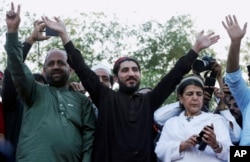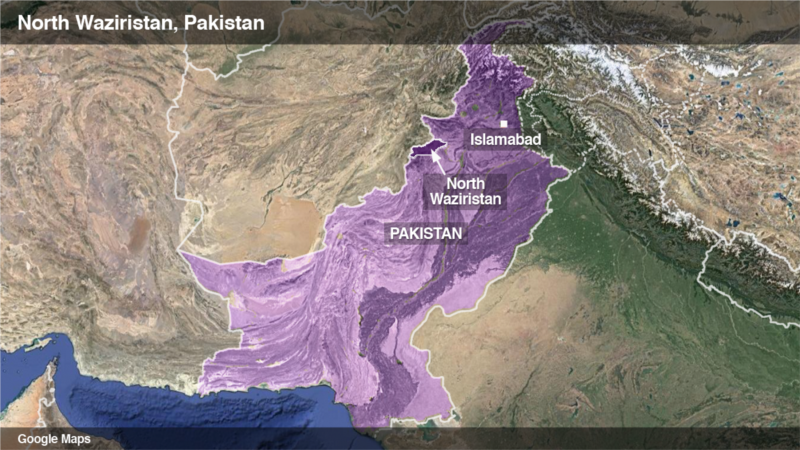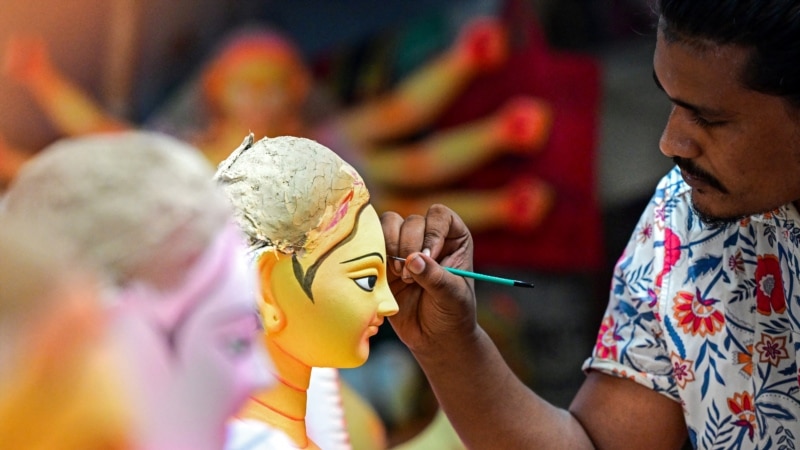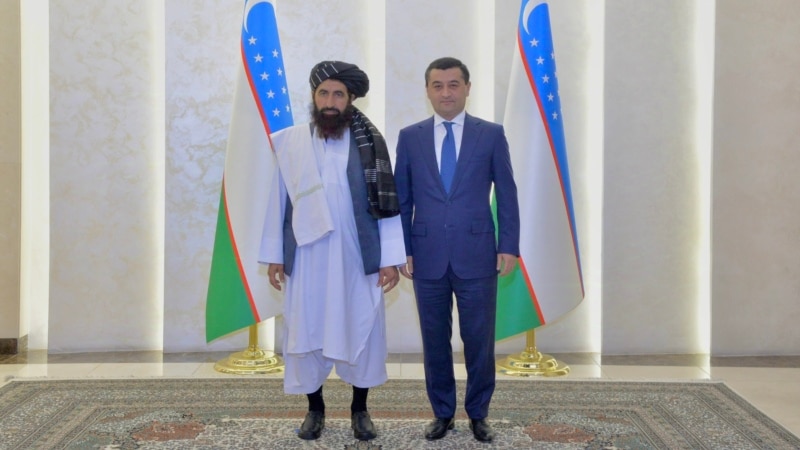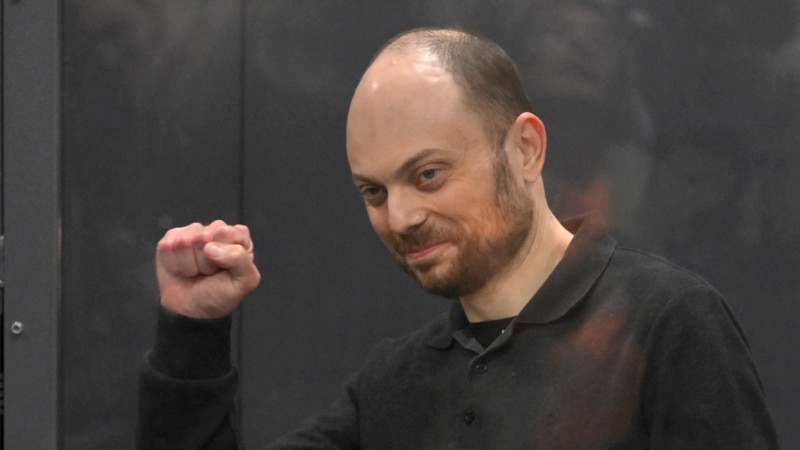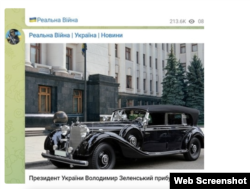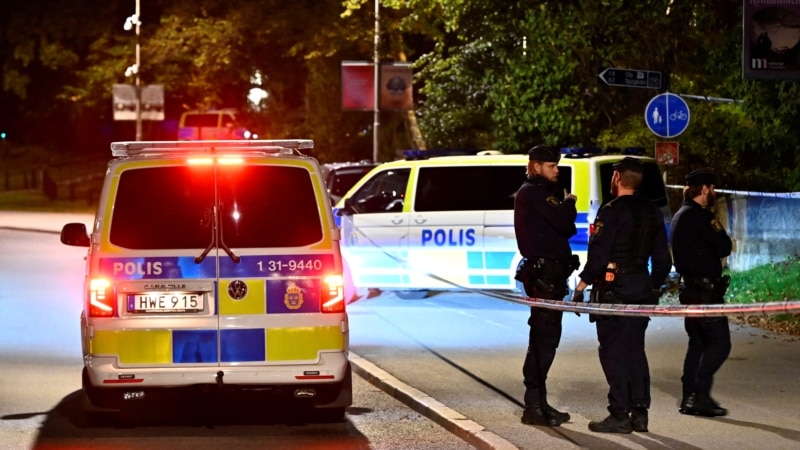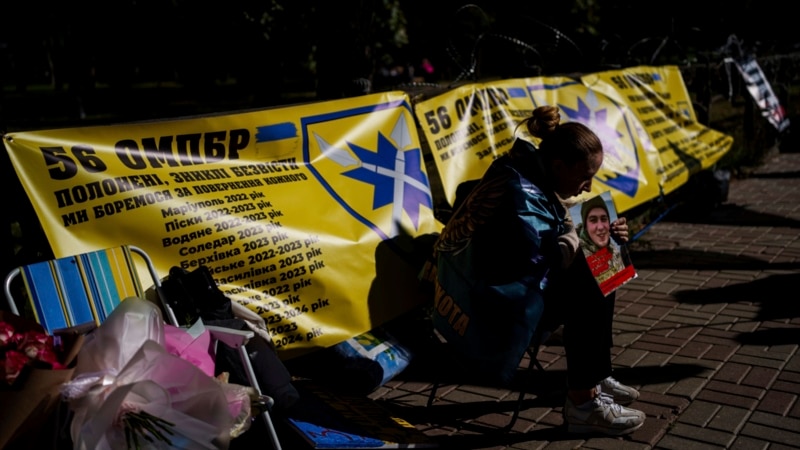This week, Pakistan banned a grassroots protest movement advocating for the rights of Pashtuns, an ethnic minority inhabiting the country’s northwestern region.
The government in Islamabad contends the movement, known as PTM, poses a threat to national sovereignty and security, but human rights groups view the move as part of a larger crackdown on dissent.
The ban, enacted Sunday under Pakistan’s anti-terror law, comes as tensions are mounting ahead of a PTM-planned jirga, or council of elders, on Friday.
Here is what you need to know about PTM:
What is it?
The Pashtun Tahafuz (Protection) Movement grew out of the turmoil of the U.S.-led war in Afghanistan and Pakistan’s counterterrorism operations in the tribal region.
With the 2001 U.S. invasion of Afghanistan driving the Taliban and al-Qaida into the region, the Pakistani military launched a series of operations over the next two decades to hunt down the militants.
The consequences were devastating for the local population. Tens of thousands were killed, thousands were forcibly disappeared and millions more were displaced. These experiences fueled a growing sense of resentment and injustice among the Pashtuns.
In response to the alleged human rights abuses by the army and extremists, a group of eight university students from the Mehsud tribe formed the Mehsud Tahafuz Movement in 2014.
The movement gained national attention in 2018 after leading a 300-kilometer march to the capital to protest the killing of a Pashtun man by Pakistani police. The group then rebranded as the Pashtun Tahafuz Movement, or PTM, giving fellow Pashtuns a cause to rally around.
PTM co-founder Manzoor Pashteen, known for his charismatic personality and oratorical skills, has become the face of the movement. Other key leaders include Ali Wazir and Mohsin Dawar, both of whom served as independent lawmakers in Pakistan’s parliament. Along with other PTM leaders and activists, they’ve been repeatedly arrested on a variety of charges.
How large is PTM?
While there are no figures on PTM membership, it has emerged as a formidable grassroots movement in recent years. Its rallies routinely attract tens of thousands of people.
What does PTM want?
PTM began with a narrow set of demands, including the removal of military checkpoints, clearance of landmines and recovery of missing persons. But its campaign has evolved over the years into a broader struggle for justice, even as the government has met some of its demands.
What methods does it use?
Modeling itself on a British-era Pashtun civil disobedience movement, PTM uses a variety of peaceful methods such as marches, protests, processions through bazaars and open-air meetings known as jalsas. The groups have reportedly formed study circles to promote nonviolence and have called for a peace-and-reconciliation commission for justice.
How does the Pakistani government view PTM?
Though the movement has drawn support from other Pashtun groups, as well as progressive Pakistani activists and politicians, it has become, as one expert said, a “thorn in the side” of Pakistan’s powerful army.
The army, which rejects accusations that it has committed egregious human rights abuses, views PTM as a threat to its legitimacy. As Madiha Afzal, a fellow at the Brookings Institution, noted in a 2020 report, by “calling the army to account” and questioning its integrity, PTM effectively undermines the authority of an institution that sees itself as the guardian of the nation.
But the army’s hostility stems from a deeper fear: Pashtun nationalism. Pakistan, created in 1947 out of several ethnolinguistic parts of then-British India, has long been wary of “strong ethnic loyalties,” according to Afzal.
While PTM has remained peaceful, it is seen by the army as a potential threat to Pakistani sovereignty, as is a violent Baluch insurgency the army has been battling for decades.
Since the early days of the movement, the army has used a variety of tactics to try to shut it down, censoring media coverage of its activities, arresting and jailing PTM leaders, and launching a disinformation campaign to brand PTM activists as traitors and terrorists supported by India and Afghanistan.
But PTM has shown few signs of faltering, combining peaceful protests with legal battles and political activism while resisting the urge to turn violent.
As one activist told researcher Qamar Jafri, “We defend against attacks through resistance driven by legal activism and remaining resilient.”
What is next?
Human rights groups such as Amnesty International have called on Pakistan to revoke its ban on PTM. But Pakistani officials say PTM has ties to both the Afghan and Pakistani Taliban, a charge the group denies.
Meanwhile, the government says PTM’s planned three-day jirga will not be allowed to proceed. At least three people were killed and several others injured as police clashed with activists near the site of the gathering on Wednesday.
VOA’s Deewa Service contributed to this report.

